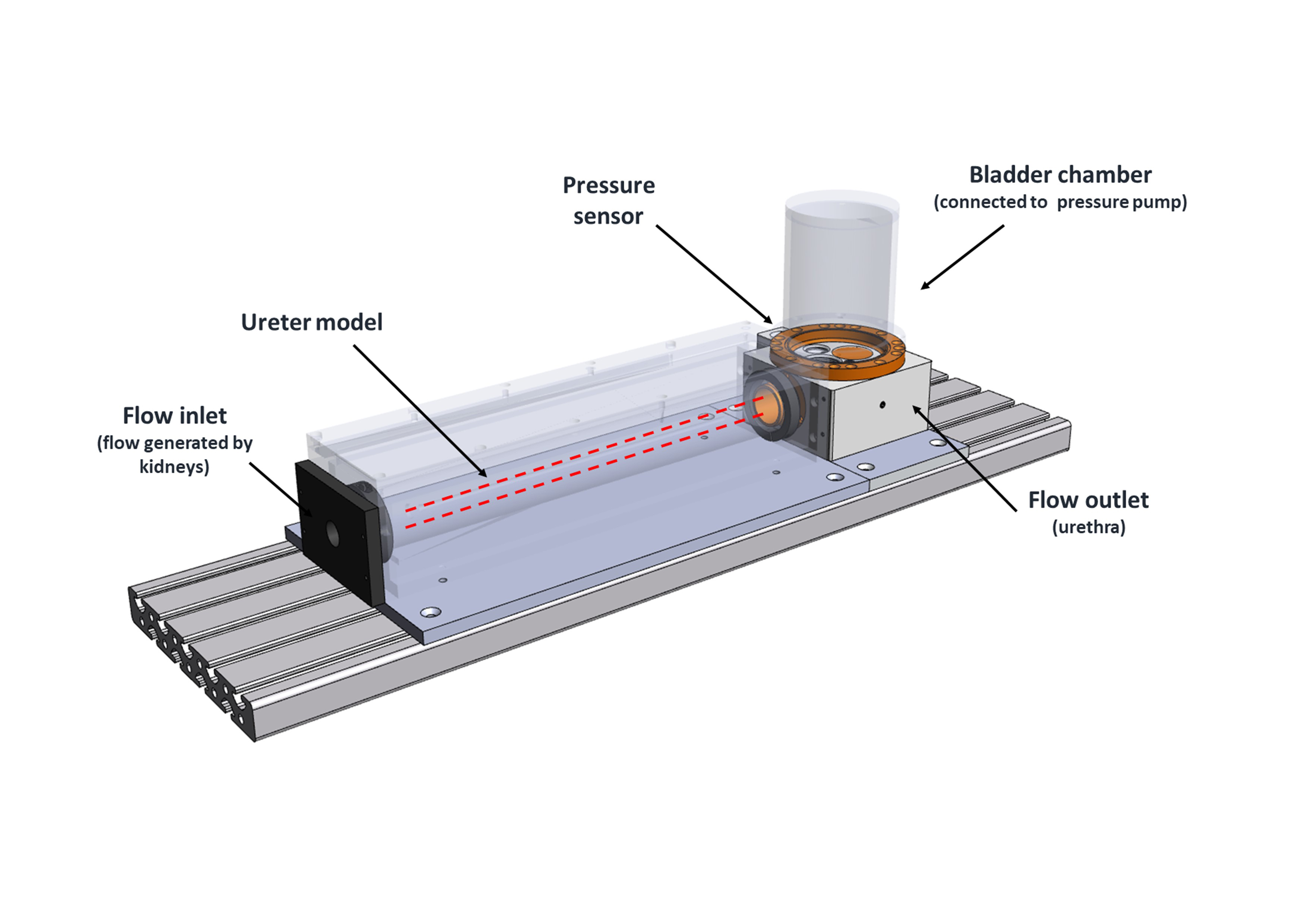Interplay Between Fluid Mechanics and Encrustation/Biofilm Development in Stented Ureters (SNF grant ## IZCOZ0_182966 with Bern University Hospital, University of Oxford and University of Southampton)
Ureters are conducts conveying urine from kidneys into the bladder. Under obstructed conditions of the ureter (e.g. kidney/ureteral stones or tumours), ureteral stents are frequently used in clinical setting to maintain the drainage of urine. Once in place, ureteral stents extend along the whole ureter length, with side holes positioned at regular intervals. Encrustation and biofilm are considered the main causes of stent failure, and it has been shown that their development in stented ureters are strongly influenced by local fluid mechanics (e.g. shear stress). UGE developed an in-vitro platform of the upper urinary tract which aims at improving the insight on the interplay between local fluid mechanics and encrustation in stented ureters. The platform has unique features as it mimics the physiological fluid-dynamic (pressure and flow) and geometrical environment inside the ureter allowing a full fluid mechanical characterisation. It consists of (see figure): i) a roller pump (to simulate the production of urine from kidneys) ii) a transparent ureter model and iii) a bladder compartment whose internal pressure can be controlled to simulate the physiological bladder pressures (during the filling and emptying cycles). The platform is combined with an index matched fluid to allow Particle Image Velocimetry (PIV) measurements within the lumen of the ureter with and without stents. In this research context, UGE is part of the ENIUS COST Action ‘European network of multidisciplinary research to improve the urinary stents’ and has well-established collaborations with the major research groups in the field.
